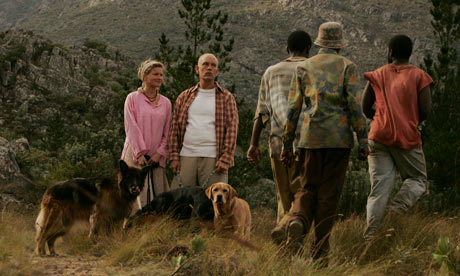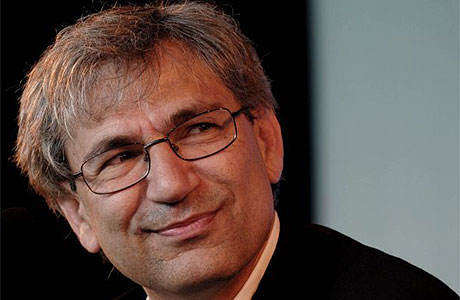Category: literary life

At a dinner party in London a few years ago, I was once again professing my admiration for the work of Coetzee when a writer I had just met interrupted to say that he thought Disgrace was a racist novel. When I asked him what could have led to such a bleak assessment, he replied that no black character in the book is complex and that the novel gives a pessimistic view of the new, post-apartheid South Africa. To bolster his claim, he cited Coetzee’s self-imposed exile from the country as a clear indicator of lack of faith in its future. This was the first time I had heard that argument, but it certainly wasn’t the last; it came up in an email conversation with another friend very recently.
I think that this charge of racism is tied specifically to the scene in which three unknown black men attack the farm where Lucy, Professor Lurie’s daughter, lives and works. Lurie is locked in the bathroom while his daughter is raped. In this life-changing moment, Lurie thinks:
He speaks Italian, he speaks French, but Italian and French will not save him here in darkest Africa. He is helpless, an Aunt Sally, a figure from a cartoon, a missionary in cassock and topi waiting with clasped hands and upcast eyes while the savages jaw away in their own lingo preparatory to plunging him into their boiling cauldron. Mission work: what has it left behind, that huge enterprise of upliftment? Nothing that he can see.
It is easy to see how a quick reading of that passage can lead to the kind of charge my friend was making: there is that phrase, ‘darkest Africa;’ there is the image of the missionary in the cauldron; there is the choice of ‘lingo’ instead of ‘language’; and there is the questioning of the benefit of the mission civilisatrice. Some readers might see this as proof of racism, but I think the problem with this interpretation is that it ascribes to J.M. Coetzee the point of view of David Lurie.
In Disgrace, Coetzee uses a third-person limited point of view, so the thoughts we are reading are Lurie’s. And Lurie is very much an apartheid-era man, someone who believes that European colonization of Africa served the larger, nobler goal of ‘civilizing’ the natives. The rape of his daughter further solidifies his views, however ignorant or incorrect they may be. But in fact Coetzee subverts the narrative of ‘black sexual predators’ much earlier on, when he presents us with an identical, inverted story. Notice, for instance, that the professor refuses to acknowledge that he has assaulted Melanie, who, we are told, is a woman of color (“Meláni, the dark one.”) When Lurie forces himself upon Melanie, he describes the scene as “not rape, not quite that.” Again, the use of the third-person limited point of view allows us to see that Lurie forgives himself for the sexual assault while at the same time he is outraged at his daughter’s fate. These complexities are, I think, what make the novel a subtle and compelling portrait of the cyclical nature of power and violence.
Photo: Still from the film adaptation of Disgrace. Credit: Fortissimo Films. I haven’t seen the film yet, but I am not sure if it can capture the subtlety of the novel.

Last Friday, the New York Times ran a story about skin-whitening creams, which contain harmful steroids, but are nonetheless widely available on the market. Of course, the marketing material for these creams doesn’t use words like “whitening.” Instead, a range of euphemisms is preferred, particularly in the United States—euphemisms such as “brightening” and “clearing” and “evening out.” But when I visited Asia and certainly in places like Morocco, I’ve seen these creams advertised with the more blunt term of “whitening.” One was called “White Perfect.” The article has a pretty shocking photo montage of baseball player Sammy Sosa, before and after treatment.
All this reminded me of Toni Morrison’s The Bluest Eye, which I am teaching this term in one of my classes. The book is a meditation on aesthetics, beauty, and the pervasiveness of a “white aesthetic,” in which white skin equals beauty and black skin does not. It’s also a deep look at what this type of uniformly available aesthetic does to the psyche of the little girl Pecola. One of the reasons I quite like this book is that it is frank and fearless in its exploration of aesthetic preferences, something that is often, whether consciously or unconsciously, silenced in literature.
(Image source: Fun with Dick and Jane.)

Yesterday marked the one-year anniversary of Israel’s air-, land- and sea-invasion of Gaza, which resulted in the loss of more than 1,400 lives. In Sunday’s Los Angeles Times, David Ulin reviews Joe Sacco’s long-awaited new book, Footnotes in Gaza, which is about a nearly forgotten massacre in in Rafah and Khan Younis. Here is a small excerpt:
Throughout the book, Sacco shows how much and how little things have changed by the use of what we might call time-fades: paired images that evoke a scene in the 1950s, followed by the same scene in the present day. The most striking of these comes at the climax of his account of the Khan Younis killings, in which he offers side-by-side illustrations, the first showing bodies piled against “the ruins of the 14th century castle, which now forms one side of the town square,” the second featuring the same castle half a century later, its walls festooned with handbills and graffiti, cars in a crowded row where the bodies once had been. Time marches on, Sacco means to tell us, and the past is only prologue if we pay attention to what it says. Yet even in a place so bound up by history, “[w]hat good would tending to history do . . . when [people] were under attack and their homes were being demolished now?”
You can read the review in full here. An excerpt from the book appeared on Mondoweiss this weekend.
Photo: Oregonian

In the most recent issue of the London Review of Books, Adam Shatz reviews Orhan Pamuk’s new novel, The Museum of Innocence, providing a more skeptical, cool-headed view of Pamuk’s work than what we’ve been accustomed to so far. Here is the opening paragraph:
Who could resist the charms, or doubt the importance, of a liberal, secular, Turkish Muslim writing formally adventurous, learned novels about the passionate collision of East and West? Orhan Pamuk is frequently described as a bridge between two great civilisations, and his major theme – the persistence of memory and tradition in Westernising, secular Turkey – is of a topicality, a significance, that it seems churlish to deny. His eight novels, the most recent of which, The Museum of Innocence, has just appeared in English, perform formal variations on that theme. Though his work fits into a Turkish tradition most closely associated with the mid-20th-century novelist Ahmet Tanpinar, one needn’t know anything about Tanpinar, or even about Turkish literature, to appreciate Pamuk, who writes in the Esperanto of international literary fiction, employing a playful postmodernism that freely mixes genres, from detective fiction to historical romance. Much of Pamuk’s fiction reads like a homage to his Western models: Mann, Faulkner, Borges, Joyce, Dostoevsky, Proust and – in The Museum of Innocence, the tale of a doomed, obsessional love affair between a man in his thirties and an 18-year-old shop girl – Nabokov. Indeed, his affection for the European tradition is as crucial to his appeal as his Turkishness, and his books pay tribute to values deeply embedded in the liberal imagination: romantic love freed from the fetters of tradition; individual creativity; freedom and tolerance; respect for difference.
You can read the piece, in its entirety, at the website of the London Review.
Photo credit: Martin Godwin/Guardian



